Throughout history, equestrian statues have served as powerful symbols of leadership, military prowess, and artistic achievement. These monumental sculptures, depicting figures mounted on horseback, stand as testaments to both artistic mastery and historical significance. From ancient Rome to modern metropolitan centers, equestrian statues have captured the imagination of both artists and viewers alike. These impressive works not only commemorate important historical figures but also showcase the technical skill required to balance a massive sculpture on the relatively small points of a horse’s legs. Join us on a journey around the world as we explore some of the most iconic equestrian monuments that continue to inspire awe and admiration.
The Marcus Aurelius Monument in Rome
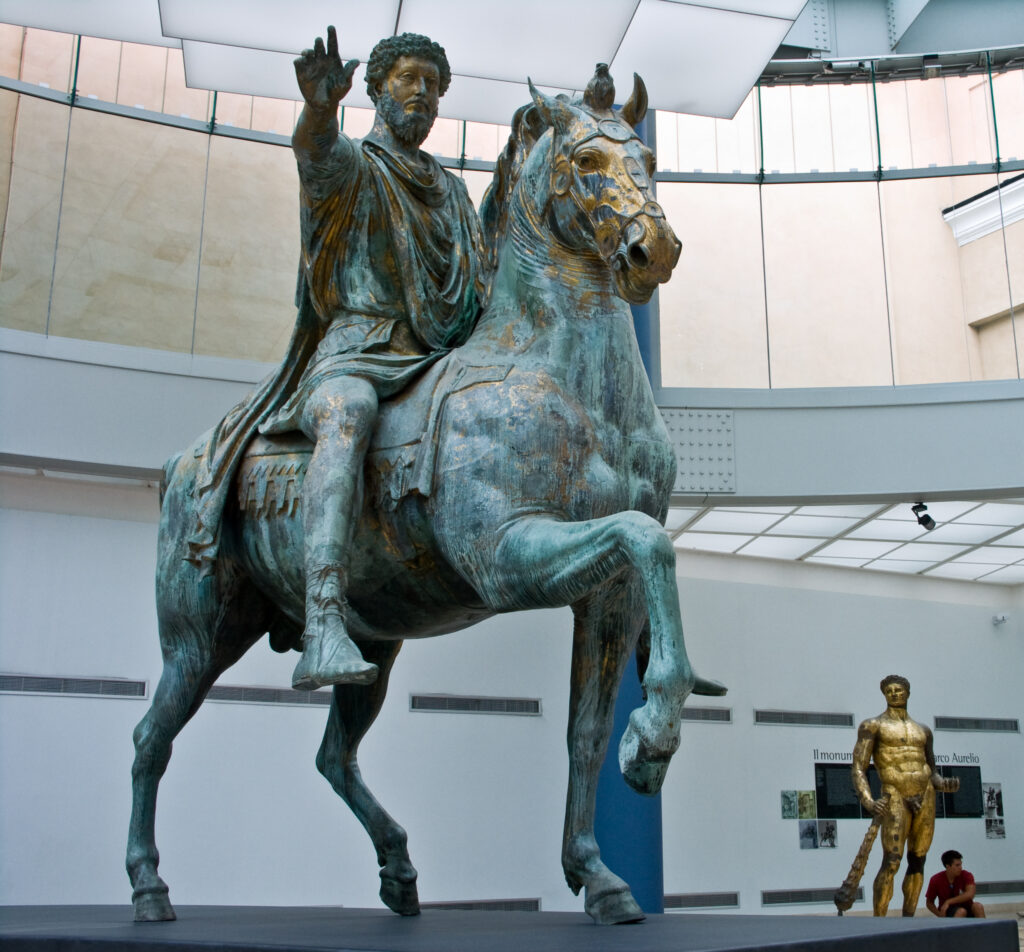
Standing in the Capitoline Museum in Rome, the equestrian statue of Emperor Marcus Aurelius represents one of the oldest and most influential examples of this art form. Created around 175 CE, this bronze masterpiece remarkably survived the medieval period when most classical bronzes were melted down, largely because it was misidentified as depicting Constantine, the first Christian emperor. The statue portrays the philosophical emperor with his arm outstretched in a gesture of address or clemency, balanced perfectly atop his powerful steed. What visitors see today in the Capitoline Square is actually a replica, with the fragile original kept safely inside the museum to protect it from environmental damage.
Gattamelata by Donatello in Padua
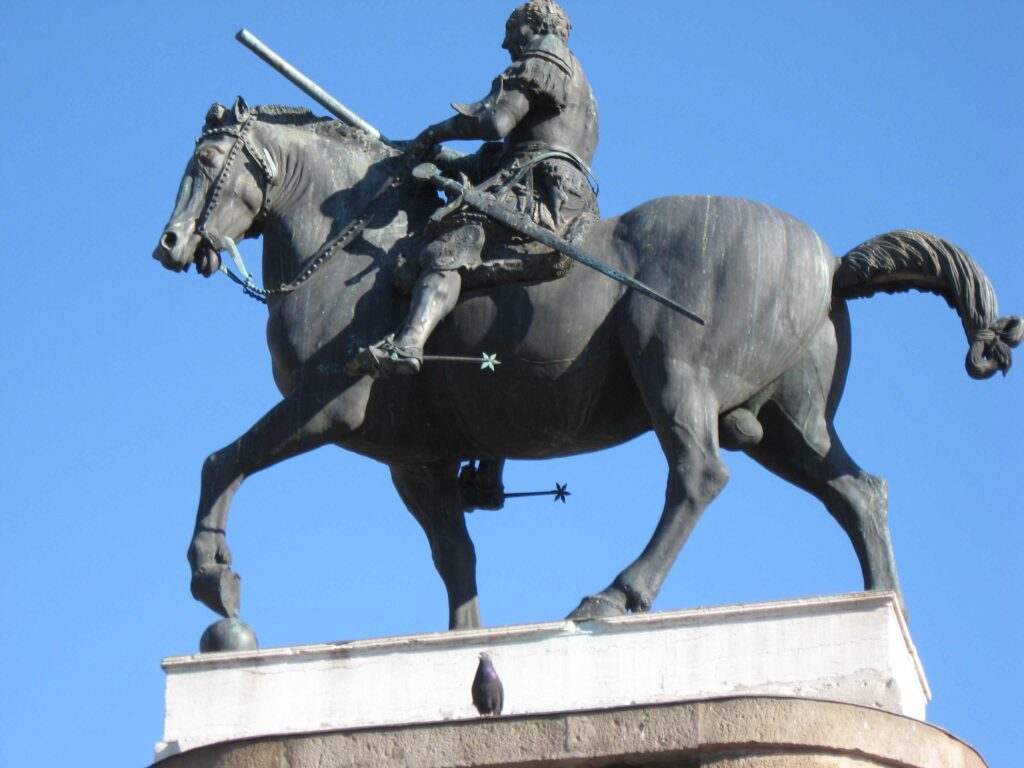
Donatello’s monument to the condottiere Erasmo da Narni, nicknamed “Gattamelata” (honey-cat), marks a revolutionary moment in Renaissance art. Completed around 1453 in Padua, Italy, this was the first large bronze equestrian statue created since ancient Roman times and sparked a revival of the form. The technical achievement cannot be overstated – Donatello solved the complex engineering problem of balancing the massive bronze horse and rider on just three points of support. Gattamelata sits dignified and calm atop his horse, embodying the Renaissance ideal of the composed military leader who conquers through intellect rather than brute force. The statue’s innovative composition influenced countless equestrian monuments that followed throughout Europe.
The Bronze Horseman of St. Petersburg
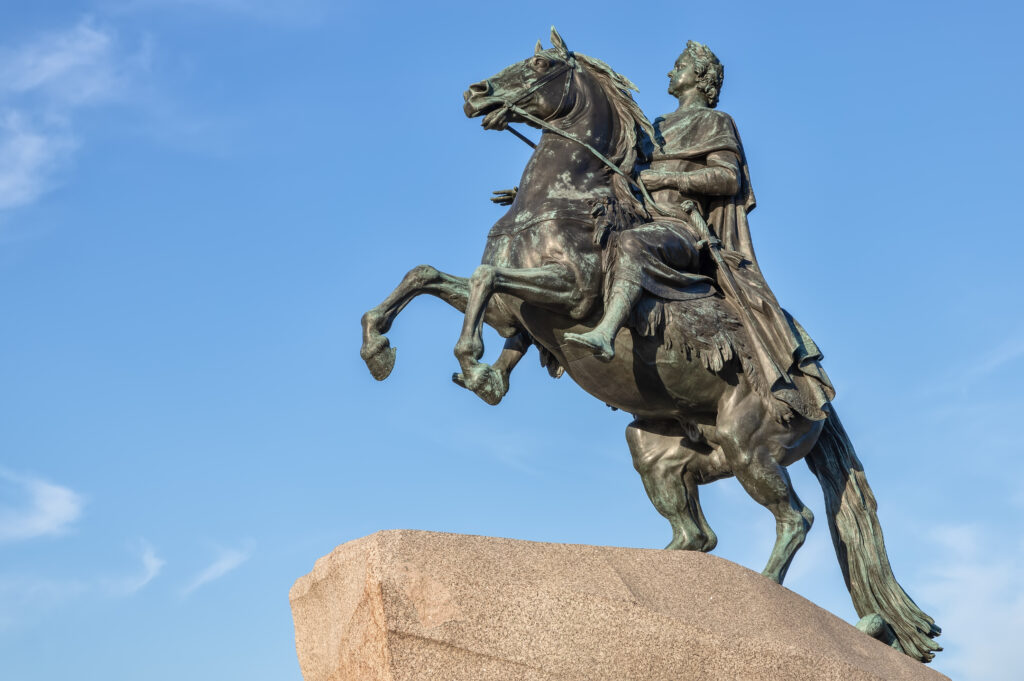
Few equestrian statues have inspired as much cultural mythology as the monument to Peter the Great in St. Petersburg, Russia. Created by French sculptor Étienne Maurice Falconet and unveiled in 1782, the statue depicts the city’s founder dramatically rearing on horseback atop the “Thunder Stone,” a massive granite pedestal that is itself a feat of engineering. The monument earned its popular name from Alexander Pushkin’s narrative poem “The Bronze Horseman,” which transformed the statue into a powerful symbol of Russian imperial power and modernization. What makes this statue particularly dynamic is the horse’s posture – balanced precariously on its hind legs with its front hooves pawing the air – creating a sense of movement and energy that seems to defy both gravity and the material limitations of bronze.
Joan of Arc in Paris
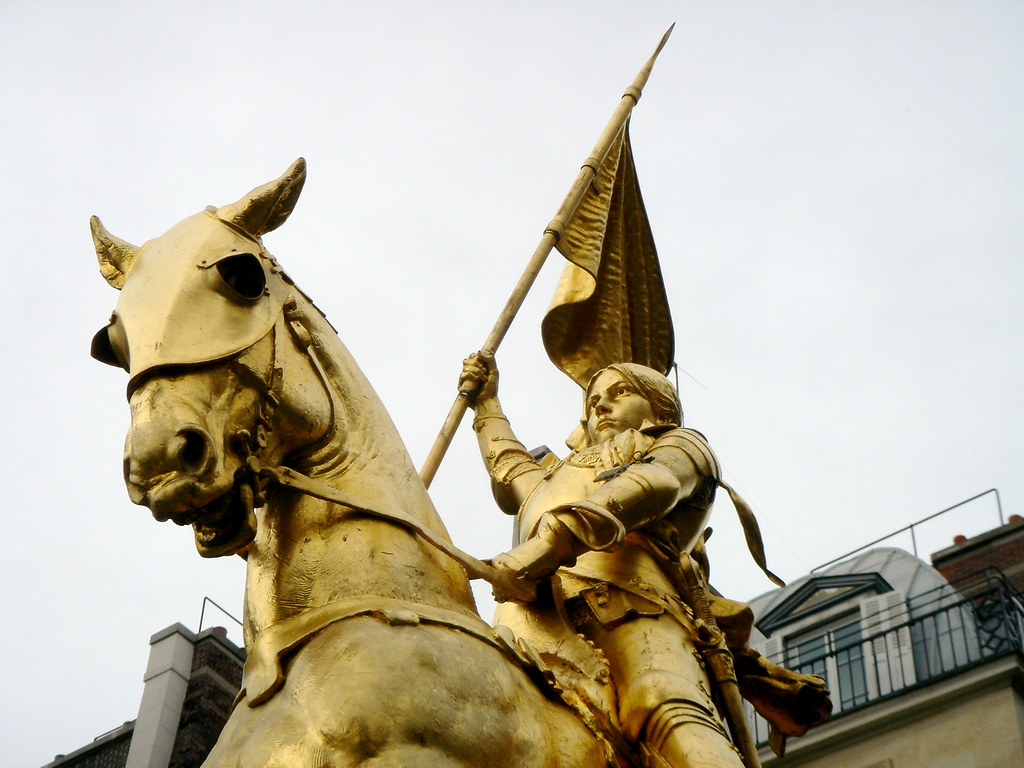
The gleaming golden equestrian statue of Joan of Arc stands as a beacon in Paris’s Place des Pyramides, commemorating France’s most beloved heroine. Created by Emmanuel Frémiet and installed in 1874, the statue depicts the Maid of Orleans in full armor, raising her standard while seated on her warhorse. This monument holds particular significance as one of the relatively few equestrian statues dedicated to a female figure, celebrating Joan’s military leadership during the Hundred Years’ War. The statue survived both World Wars largely unscathed, and has been seen by many French citizens as a symbol of national resilience and determination. Interestingly, Frémiet was dissatisfied with his original design and later created a revised version that stands in Philadelphia, demonstrating his artistic perfectionism.
Genghis Khan Equestrian Statue in Mongolia
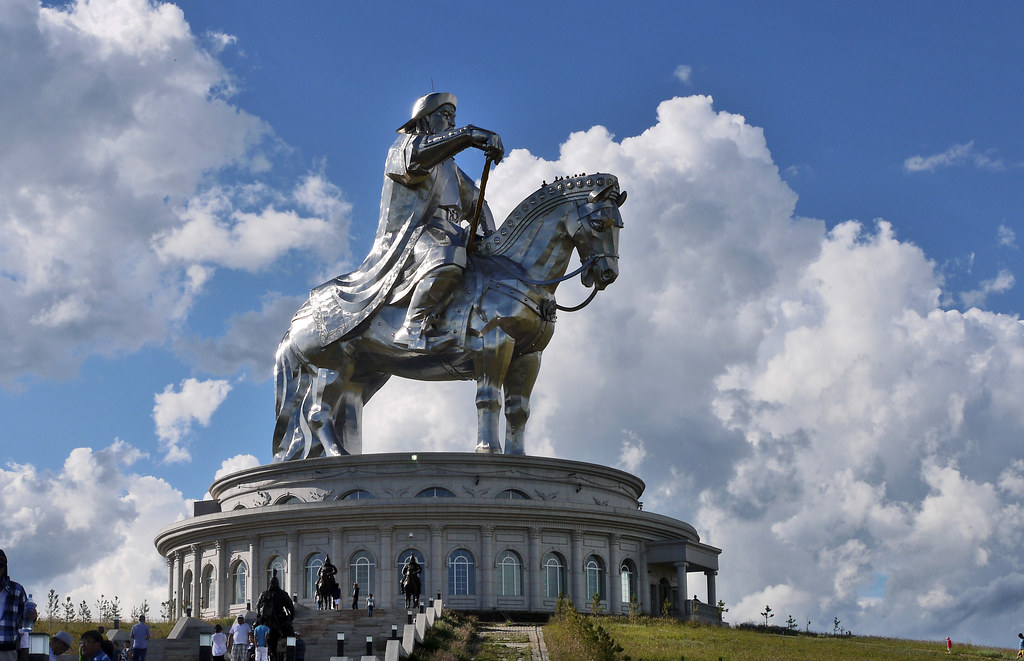
Towering over the Mongolian steppe, the Genghis Khan Equestrian Statue is a modern colossus that pays tribute to the founder of the Mongolian Empire. Completed in 2008 near Ulaanbaatar, this stainless steel giant stands 40 meters (131 feet) tall, making it the largest equestrian statue in the world. The monument depicts the great khan holding his golden whip aloft while seated on a fiercely dynamic steed. Visitors can take an elevator inside the statue and emerge onto a viewing platform on the horse’s head, offering spectacular views of the surrounding landscape that was once the heart of Genghis Khan’s vast empire. The statue’s base houses a museum dedicated to Bronze Age artifacts and exhibits about Mongolian culture, making it both a monument and a cultural institution.
Equestrian Statue of George Washington in New York
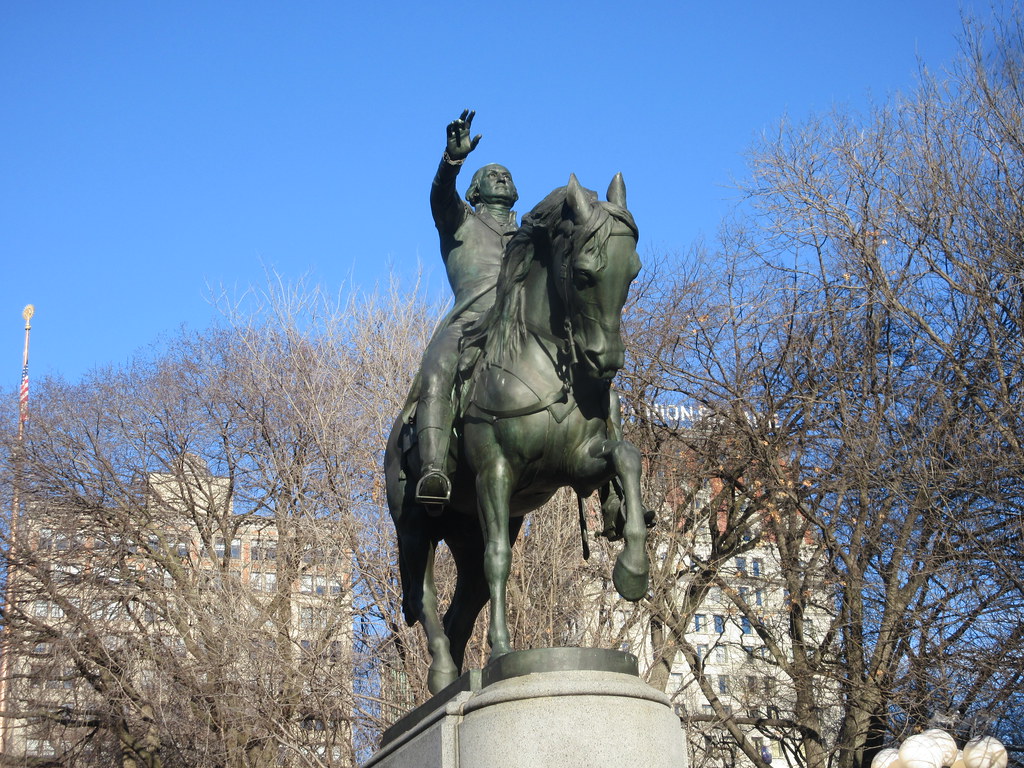
Standing proudly in Union Square Park, Henry Kirke Brown’s equestrian statue of George Washington has witnessed the evolution of New York City since its installation in 1856. This bronze monument depicts America’s first president astride his horse on the day the British evacuated New York in 1783, with Washington raising his hat in a gesture of salute. As the first public sculpture cast in bronze in the United States, it represents a significant milestone in American artistic development. The statue survived the Civil War, two World Wars, and countless demonstrations in Union Square, becoming an enduring symbol of American persistence and liberty. An interesting feature is that Washington is depicted riding with long stirrups in the European style rather than the shorter stirrups that would have been more historically accurate.
Statue of El Cid in Seville
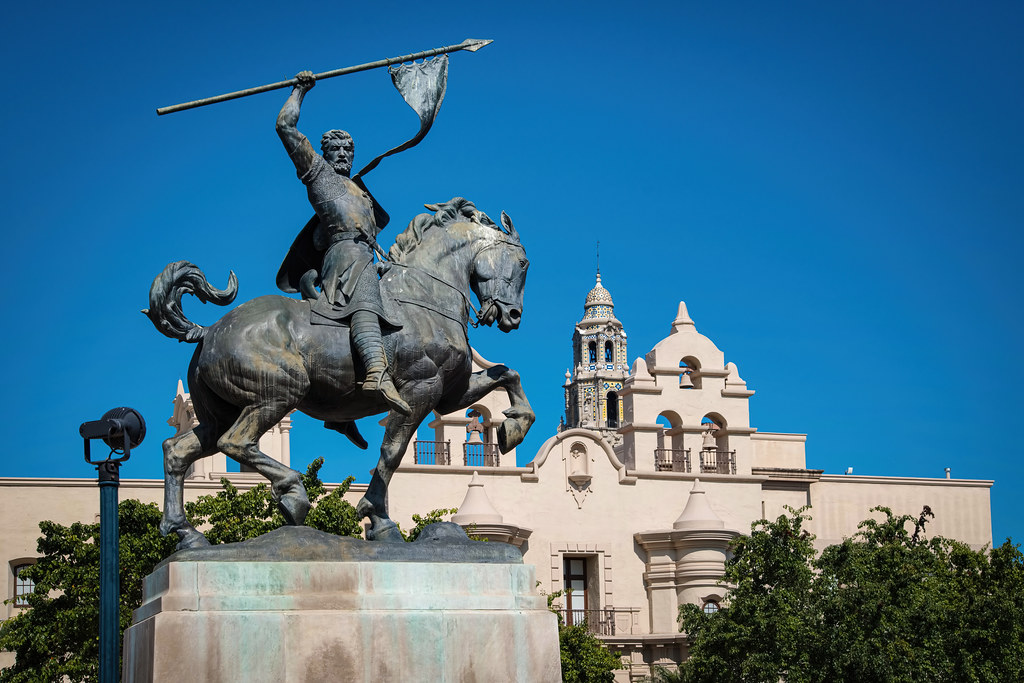
The magnificent bronze statue of El Cid in Seville captures the legendary Spanish military leader Rodrigo Díaz de Vivar in a moment of heroic determination. Created by American sculptor Anna Hyatt Huntington in 1927, this dynamic monument shows El Cid firmly controlling his powerful charger while brandishing his sword. The statue blends historical accuracy with artistic expression, with meticulous attention paid to details of medieval armor and equestrian equipment. Huntington, known for her exceptional ability to sculpt animals, created multiple versions of this statue, with identical copies standing in San Diego, California and in Valencia, Spain. The statue’s placement in Seville’s Parque de María Luisa creates a powerful juxtaposition between the medieval warrior and the lush garden setting, enhancing its dramatic effect.
Equestrian Statue of King José I in Lisbon
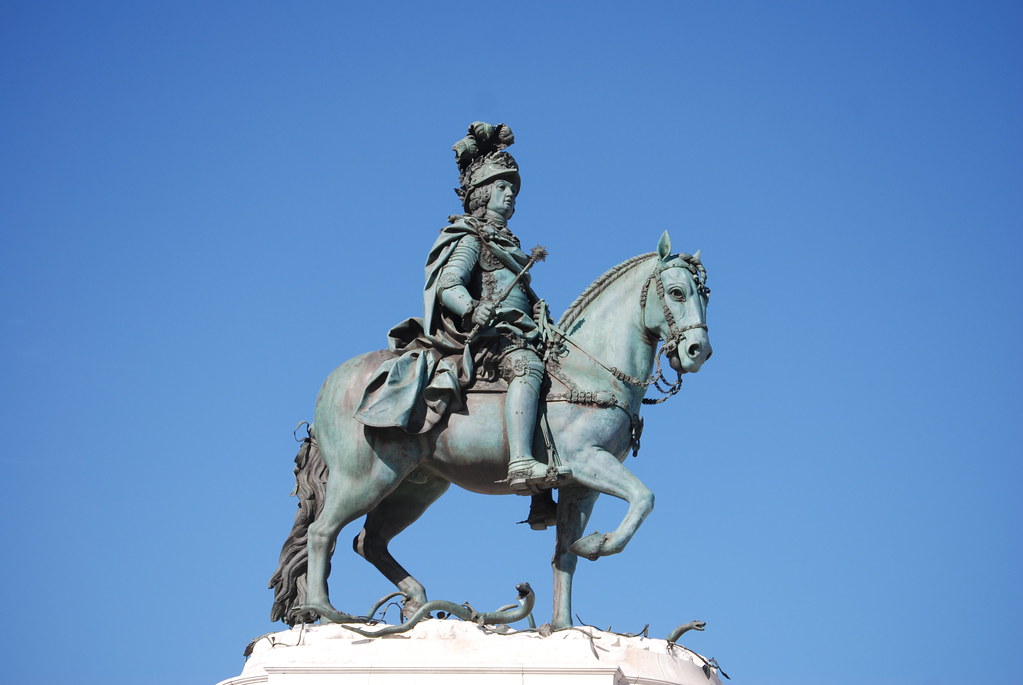
Standing at the center of Lisbon’s magnificent Commerce Square (Praça do Comércio), the equestrian statue of King José I is considered one of Portugal’s finest sculptural achievements. Completed in 1775 by Joaquim Machado de Castro, this baroque masterpiece commemorates the monarch who oversaw the rebuilding of Lisbon after the devastating 1755 earthquake. The bronze statue shows the king in Roman imperial attire atop a calm, dignified horse, while the marble pedestal features allegorical reliefs depicting the king’s achievements and the earthquake’s destruction. What makes this monument particularly significant is that it survived not only natural disasters but also Portugal’s transition from monarchy to republic, when many royal symbols were removed or destroyed. Today, it serves as both a historical marker and the centerpiece of one of Europe’s most beautiful public squares.
Emperor Maximilian I in Innsbruck
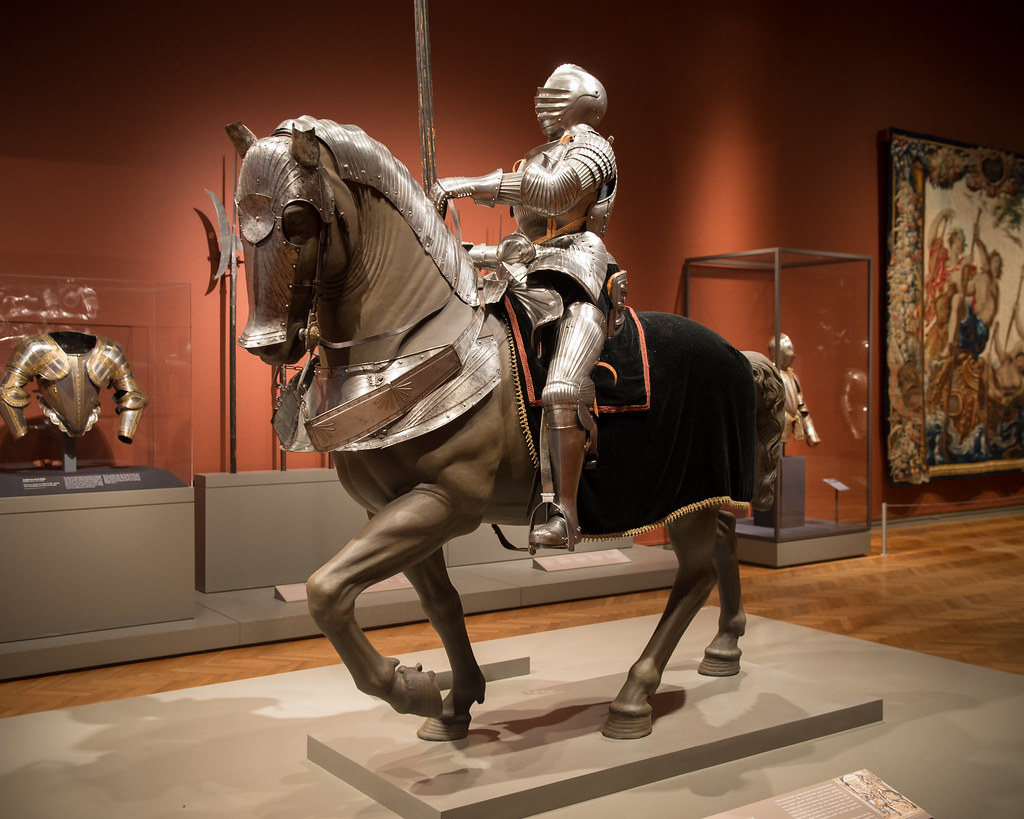
Unlike typical equestrian monuments, the cenotaph of Emperor Maximilian I in Innsbruck’s Court Church offers a unique interpretation of the form. Rather than an outdoor public statue, this is an elaborate marble sarcophagus surrounded by 28 oversized bronze statues, including a remarkable equestrian figure of King Arthur of Britain. Created between 1508 and 1562, the entire ensemble represents one of the most ambitious sculptural projects of the German Renaissance. The figure of Arthur, attributed to Peter Vischer the Elder, depicts the legendary king in full plate armor atop a powerfully realistic horse, showcasing the period’s highest achievements in bronze casting. Though created as part of a funerary monument, these bronze guardians transcend their memorial purpose to stand as artistic masterpieces in their own right.
Statue of Charles IV in Mexico City
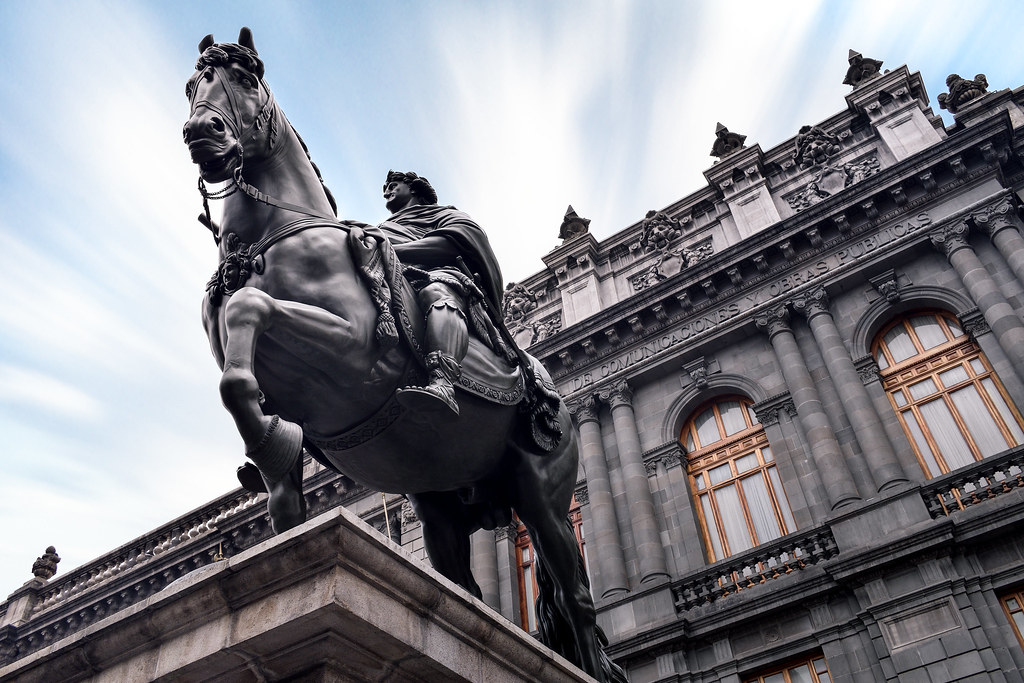
Known locally as “El Caballito” (The Little Horse), the equestrian statue of King Charles IV of Spain stands as one of the most important sculptural works in the Americas. Created by Spanish sculptor Manuel Tolsá and unveiled in 1803, this masterpiece of neoclassical bronze work survived Mexico’s independence from Spain despite depicting the former colonial ruler. The statue portrays Charles IV in Roman attire atop a perfectly proportioned horse, demonstrating Tolsá’s mastery of classical aesthetics and bronze casting. What makes this monument particularly remarkable is its history of relocations – originally placed in the Zócalo (main square), it was moved to several different locations as Mexico’s political relationship with its colonial past evolved. Today, it stands in a special plaza near the Palace of Mining, protected by a fence and admired more for its artistic excellence than its political associations.
Equestrian Statue of Frederick the Great in Berlin
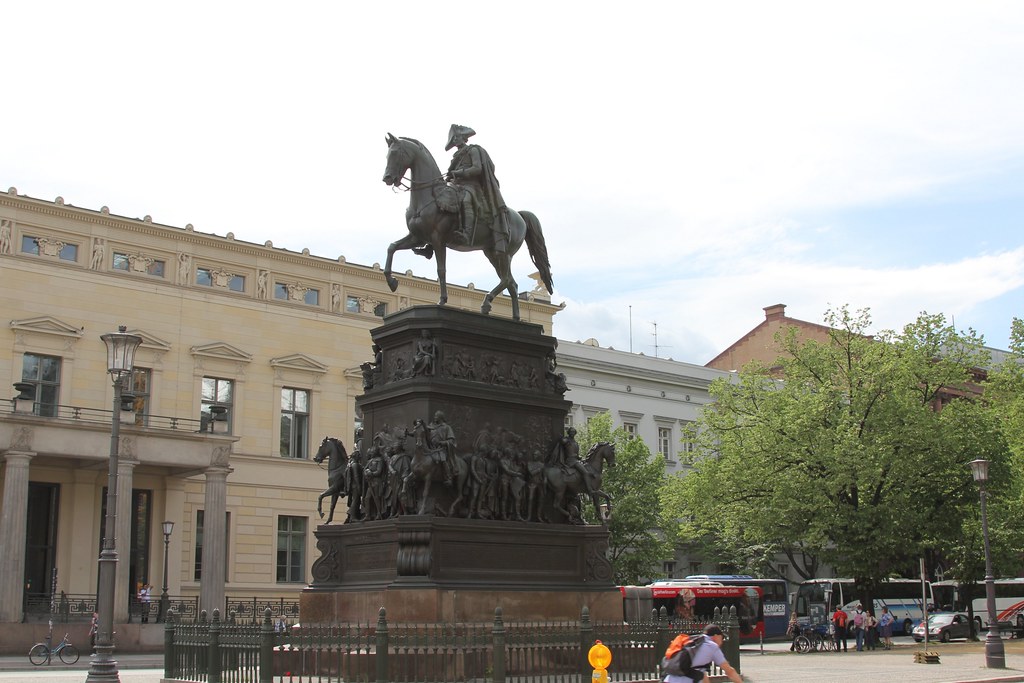
Dominating the eastern end of Unter den Linden, Berlin’s historic boulevard, stands Christian Daniel Rauch’s monumental tribute to Prussia’s most famous king. Unveiled in 1851, this bronze colossus depicts Frederick the Great in his military uniform atop his favorite horse, while the elaborate pedestal features scenes from his life and figures of prominent contemporaries. The statue’s history mirrors Germany’s turbulent past – it survived World War I, was dismantled and hidden during World War II to protect it from Allied bombing, relegated to obscurity in East German times, and finally returned to its original location after German reunification. The meticulous attention to detail, from Frederick’s facial expression to the horse’s musculature, demonstrates why Rauch was considered Germany’s preeminent sculptor of his era. Today, the monument serves as both a tourist attraction and an enduring symbol of Berlin’s resilience.
Andrew Jackson in Washington, D.C.
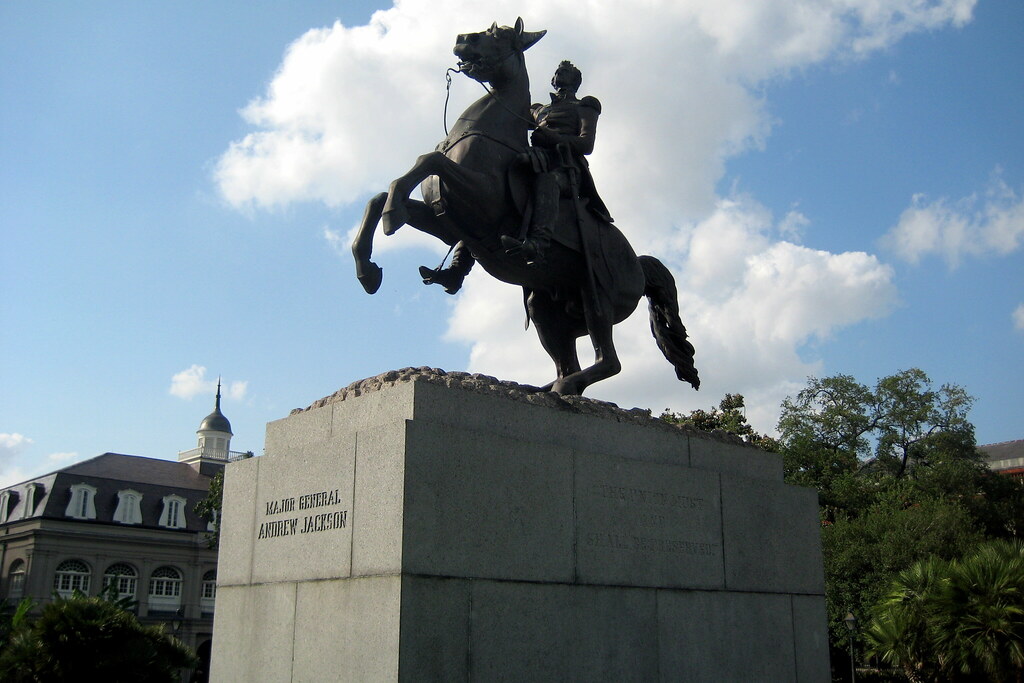
Few equestrian statues capture dynamic movement as effectively as Clark Mills’ bronze monument to President Andrew Jackson in Washington’s Lafayette Square. Completed in 1853, this technical marvel was the first bronze statue cast in the United States and the first equestrian statue in the world to be balanced solely on the horse’s hind legs without additional support. The statue commemorates Jackson’s military leadership at the Battle of New Orleans during the War of 1812, depicting him raising his hat in salute while controlling his rearing horse. What makes this work particularly remarkable is that Mills, largely self-taught, created such an engineering feat without having seen any European equestrian monuments. The statue became so iconic that it has been reproduced in other American cities, including Nashville, Tennessee, and Jacksonville, Florida.
Shivaji Maharaj Statue in Mumbai
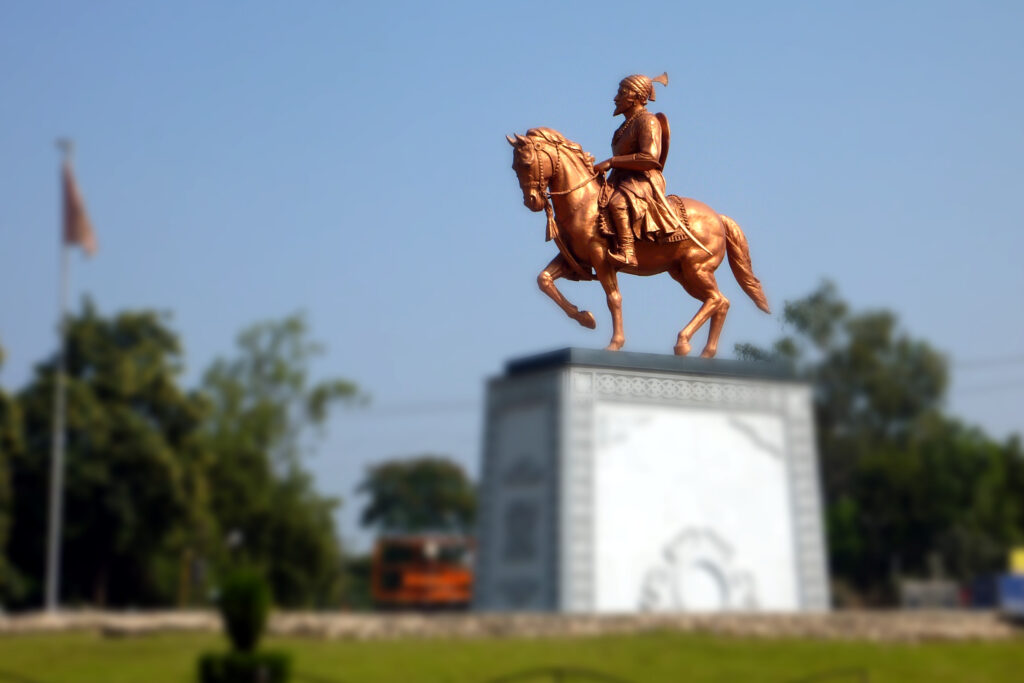
Standing proudly at the Gateway of India in Mumbai, the equestrian statue of Chhatrapati Shivaji Maharaj honors the 17th-century founder of the Maratha Empire. Created by sculptor V.V. Nagesh Colkar and unveiled in 1961, this bronze monument depicts the revered warrior-king with his sword drawn, symbolizing his defiance against foreign rule. The statue has become not just a tourist attraction but a potent symbol of Maharashtrian pride and identity in modern India. What gives this monument particular resonance is Shivaji’s historical significance as a leader who successfully challenged the mighty Mughal Empire and established an independent Hindu state. The statue’s location at the Gateway of India, built during British colonial rule, creates a powerful juxtaposition that speaks to India’s complex historical narrative of resistance and independence.
Conclusion
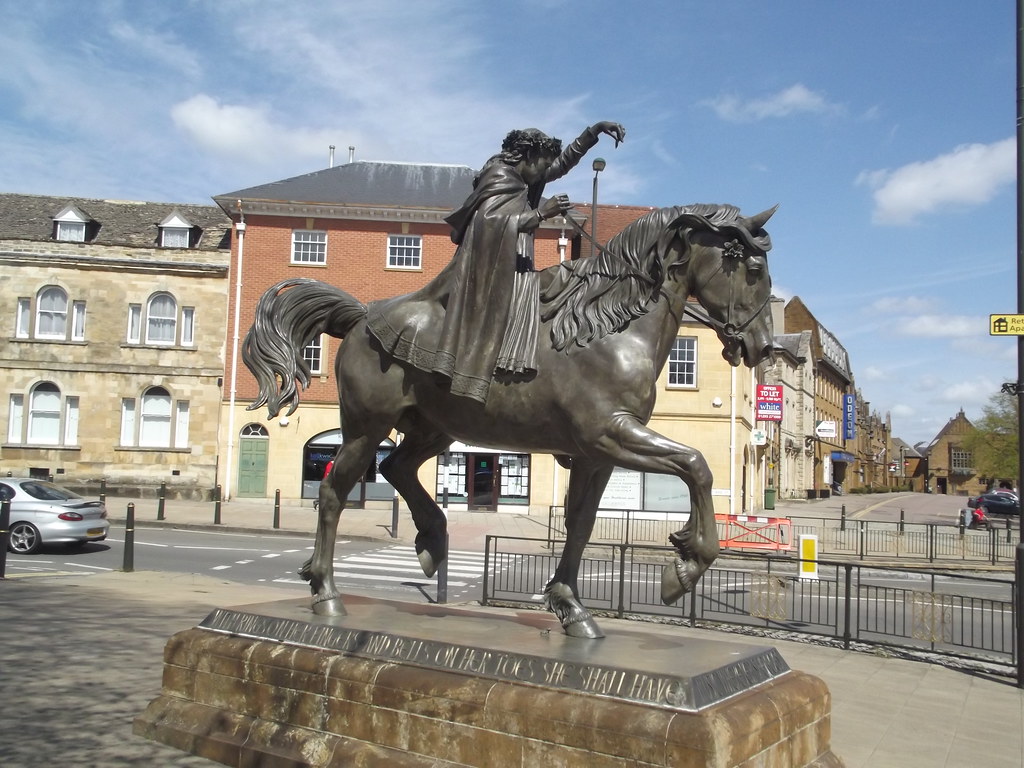
Equestrian statues remain among the most technically challenging and symbolically potent forms of public art. These monuments do more than commemorate individual leaders – they reflect the values, aspirations, and artistic capabilities of the societies that created them. From ancient bronzes to modern colossi, each statue tells multiple stories: of the figure depicted, of the artist who created it, and of the community that has preserved it through the centuries. As we’ve traveled around the world exploring these magnificent monuments, we’ve seen how they transcend mere decoration to become focal points for national identity, historical memory, and artistic achievement. Whether centuries old or recently created, these impressive sculptures continue to inspire awe, prompting us to look up – literally and figuratively – to the towering figures who shaped our world.







